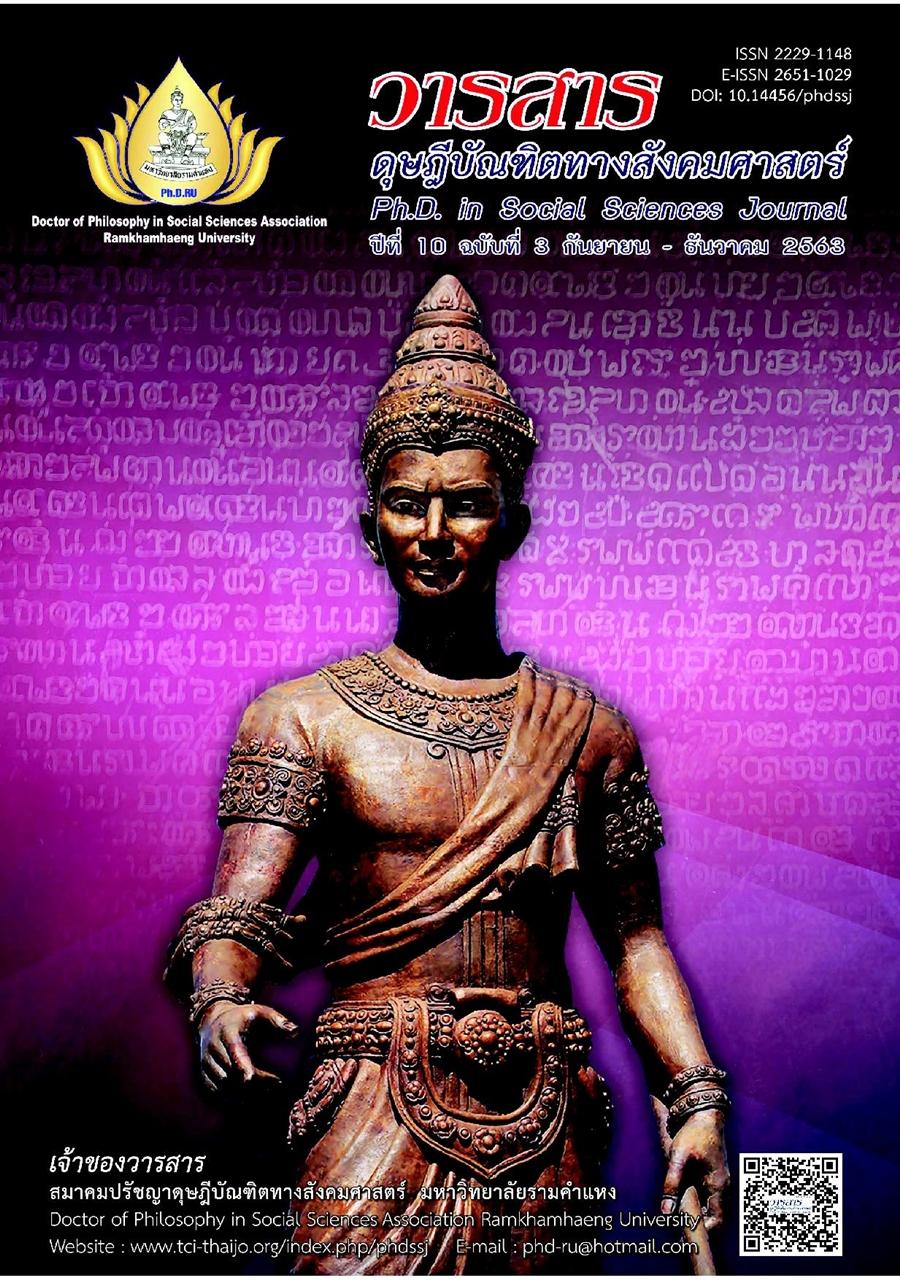A Comparison of Parameter Estimation of Item Parameters under Item Response Theory and Testlet Response Theory Model withSome Items Lacking of Local Independence
Main Article Content
Abstract
This research article aims to compare item parameters estimates under item response theory and testlet response theory with some items lacking local independence. In this research, conditions included the difference of test types, sample group size, levels of test length, rate of increase of some items lacking local independence, and methods to estimate item parameter.
Findings are as follows: (1) IRT trend to estimate item parameters more nearly item parameters of local independence than TRT, (2) Estimated parameters of the IRT and TRT were significantly correlated in all aspects (p < .05), (3) Average of the item parameters estimated under 3PL IRT and the 3PL TRT were not significantly different in all aspects (p > .05), and (4) RMSE of test information function under IRT trend to over than TRT
Article Details
Academic articles, research articles, and book reviews in the Ph.D. in Social Sciences Journal are author’s opinions, and not the publisher’s, and is not the responsibility of the Ph.D. in Social Sciences Journal Philosophy Association, Ramkhamhaeng University. (In the case that research is done on human, the researcher has to be trained in Ethics for Doing Research on Human Training and has to produce the evidence of the training).
References
Andrich, D. (1988). Rasch models for measurement. Sage.
Baker, F. B. (2001). The basics of item response theory (2nd ed.). ERIC Clearinghouse on Assessment and Evaluation.
Bradlow, E. T., Wainer, H., & Wang, X. (1999). A bayesian random effects model for testlets. Psychometrika, 64(2), 153-168.
Buakaew, J., Wongnam, P., & Panhoon, S. (2018). Estimated parameters of the testlet-test under item response theory and testlet response theory model. Suratthani Rajabhat Journal, 5 (1), 139-155. [In Thai]
Camilli, G., & Shepard, L. A. (1994). Methods for identifying biased test items. Sage.
Embretson, S. E., & Reise, S. P. (2000). Item response theory for psychologists. Lawrence Erlbaum.
Hambleton, R. K., & Swaminathan, H. (1985). Item response theory: principles and application. Kluwer-Nijhoff.
Kim, W., & Oslund, E. (2015). Applying testlet response theory models to a reading comprehension test. Proceeding of Twenty-Second Annual Meeting Society for the Scientific Study of Reading. Newport Beach, California.
Lord, F. M. (1980). Application of item response theory to practical testing problems. Erlbaum.
Reeve, B. B. (2003). An introduction to modern measurement theory. Retrieved from https://citeseerx.ist.psu.edu/viewdoc/download?doi=10.1.1.207.3244&rep=rep1&type=pdf
Sireci, S. G., Thissen, D., & Wainer, H. (1991). On the reliability of testlet-based tests. Journal ofEducational Measurement, 28(3), 237-247.
Steinberg, L., & Thissen, D. (1995). Item response theory in personality research. In P. E. Shrout, & S. T. Fiske (Eds.), Personality research, methods, and theory: A festschrift honoring Donald W. Fiske (pp. 161-181). Erlbaum.
Thissen, D., & Orlando, M. (2001). Item response theory for items scored in two categories. In D. Thissen, & H. Wainer (Eds.), Test scoring (pp. 73-140). Lawrence Erlbaum Associates.
Thissen, D., Steinberg, L., & Mooney, J. (1989). Trace lines for testlets: A use of multiple categorical response models. Journal of Educational Measurement, 26(3), 247-260.
Wainer, H., & Kiely, G. L. (1987). Item clusters and computerized-adaptive testing: A case for testlets. Journal of Educational Measurement, 24(3), 185-201.
Yen, W. M. (1993). Scaling performance assessments: Strategies for managing local item dependence. Journal of Educational Measurement, 30(3), 187-213.
Zenisky, A. L., Hambleton, R. K., & Sireci, S. G. (2003). Effects of local item dependence on the validity of irt item, test, and ability statistics. Association of American Medical Colleges.


